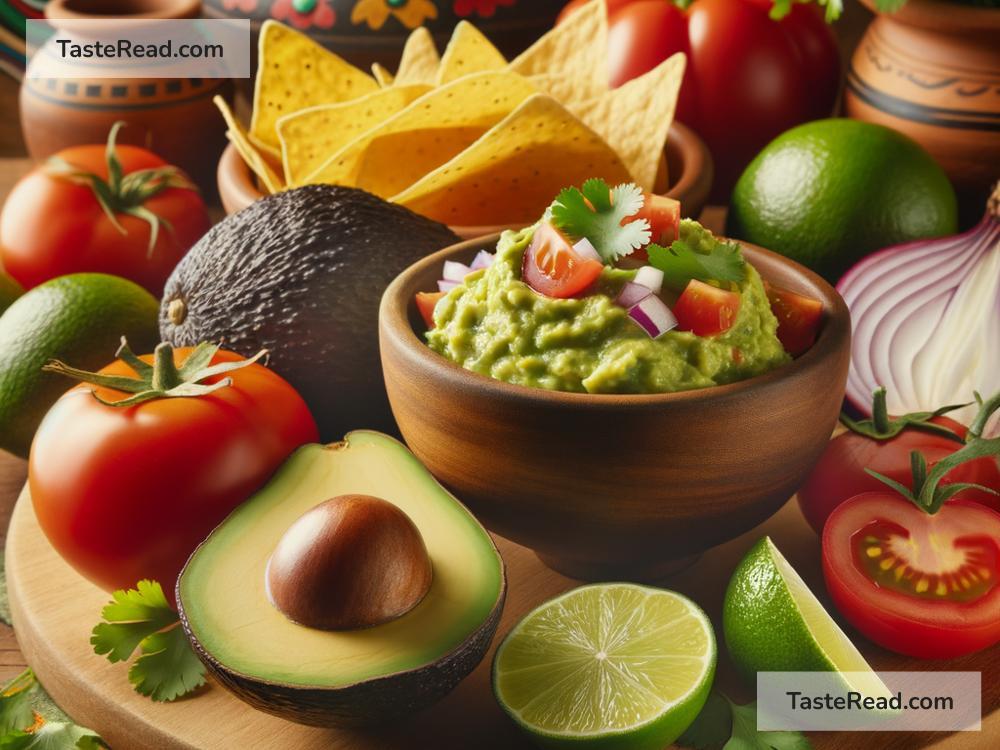The Story of Mexican Guacamole: A Delicious Tradition
Guacamole is one of the most loved Mexican foods in the world. Its rich, creamy texture and zesty taste make it a favorite for people of all ages. Whether you’re scooping it up with tortilla chips, spreading it on tacos, or adding it to your favorite dishes, guacamole is a staple that brings people together. But where exactly does guacamole come from, and why is it so special? Let’s explore the fascinating story of Mexican guacamole and its importance in history, culture, and food.
The Beginnings of Guacamole
Guacamole’s origins go back thousands of years to the ancient Aztecs, who lived in central Mexico during the 14th to 16th centuries. The Aztecs were skilled farmers and cooks, using the land’s bounty to create flavorful dishes. Among their many achievements, they discovered the avocado—a green, creamy fruit that grew on trees.
The Aztecs called the avocado “ahuacatl,” which translates to “testicle.” This curious name was inspired by the fruit’s shape. They believed the avocado had special powers, like boosting energy and improving love and health. It was so treasured that the Aztecs considered it an important food and even prayed to their gods for good avocado harvests.
To make guacamole, they mashed ripe avocados into a creamy paste and mixed it with other ingredients like tomatoes and chilies. This early version of guacamole was simple but delicious.
Avocados in Ancient Mexico
Avocados have always played an important role in Mexican culture. Indigenous groups used them for food, medicine, and even as part of rituals. The fruit was not only nutritious but also a symbol of fertility and life.
When Spanish explorers arrived in Mexico in the 1500s, they were introduced to the avocado by the indigenous people. The Spaniards loved the creamy fruit and brought it back to Europe, where it continued to grow in popularity. However, the avocado remained a central ingredient in traditional Mexican cuisine.
The Name “Guacamole”
Today, guacamole is made with avocados, lime juice, salt, and other fresh ingredients like cilantro, onions, tomatoes, and chilies. But where does the word “guacamole” come from?
The name comes from the Nahuatl language, spoken by the Aztecs and other indigenous groups. In Nahuatl, “ahuacamolli” means “avocado sauce.” Over time, the word evolved into the Spanish term “guacamole,” which is how most people know it today.
Guacamole in Modern Mexico
Guacamole has become a symbol of Mexican food culture. It’s often served at family gatherings, celebrations, and festivals. There’s no one “right” way to make guacamole—the recipe varies based on regional and family traditions. Some people like it spicy with extra chilies, while others prefer it with chunks of tomato. The beauty of guacamole is its simplicity and versatility. No matter how you make it, guacamole always feels fresh, natural, and comforting.
In Mexico, guacamole is typically enjoyed with fresh tortillas or added to dishes like tacos, burritos, or tostadas. It’s also used as a dip for crispy tortilla chips or raw vegetables.
Avocado Popularity and Global Impact
Today, the avocado is loved all over the world, and guacamole has become an international star. In fact, avocados are often called “green gold” because they’re so valuable. Mexico is the largest producer of avocados, and farmers work hard to meet global demand.
Every year, millions of people eat guacamole during events like Super Bowl Sunday in the United States. It has become a favorite party food and appetizer far beyond Mexico’s borders.
This global popularity, however, has also raised some challenges. Because farmers need large amounts of water to grow avocados, there are concerns about sustainability. Still, Mexican farmers continue to use traditional, eco-friendly practices to ensure that avocados remain both healthy and delicious.
Fun Facts About Guacamole
- Healthy and Nutritious: Avocados are packed with vitamins, healthy fats, and fiber, making guacamole good for your body.
- Guacamole Day: There’s even a holiday to celebrate this tasty dish—National Guacamole Day, which falls on September 16 in the United States. It’s a fun reason to gather with friends and enjoy guacamole!
- Guacamole Competitions: In some places, chefs compete to see who can make the best guacamole. Competitors experiment with new ingredients like mango or bacon, while others stick to classic recipes.
Why We Love Guacamole
Guacamole is much more than food—it’s a connection to Mexico’s history and culture. Every bite tells the story of the Aztecs, the fertile land of Mexico, and the way food can bring people together. Guacamole represents joy, tradition, and creativity. Whether you’re cooking at home, dining at a Mexican restaurant, or sharing chips with friends, guacamole always feels special.
So the next time you dip into creamy guacamole, take a moment to appreciate its long and fascinating journey from ancient Aztec kitchens to tables all over the world. And maybe, just maybe, you’ll love it even more.
Guacamole isn’t just a dish—it’s a celebration of Mexican heritage, success, and flavor. That’s the story of guacamole: simple but meaningful, just like the food itself. Enjoy!


